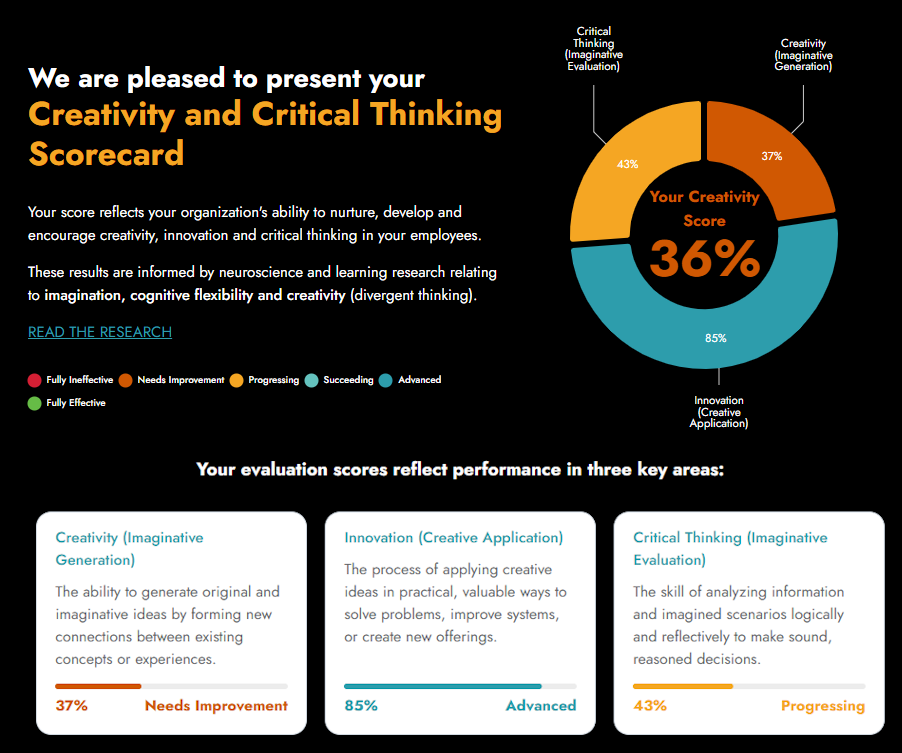Conditions for Creativity
- Russell Cullingworth

- Jun 5, 2025
- 4 min read
“If you look at history, innovation doesn’t come just from giving people incentives; it comes from creating environments where their ideas can connect.“ Steven Johnson

"We're getting NOWHERE!"
The CEO slapped her hand down on the boardroom table. "Our competition are decimating us and we're bleeding out. I need some new ideas! What am I paying you for?"
Her team of executives looked at each other with sheepish and awkward expressions. No one dared look at her. Nelson, who was no longer at the table, poor dude - everyone remembered how he'd courageously tried to introduce a new product line.
Somehow he'd managed to get a approval and a budget to hire new staff and set up a location; and initially, things looked really positive. All the signs pointed to healthy growth and increasing revenues - until Covid decimated the division's market and the customers vanished, almost overnight - nothing Nelson could have planned for, or predicted.
Now, there was an empty seat where Nelson had been. The image of him being walked out of the office with security keeping a close eye on him had deeply impacted the team, who called it his "walk of shame".
Amongst themselves, in private, when someone talks about new ideas and innovation, the others ask them if they really want to "pull a Nelson". After all, they all have homes, mortgages and families to provide for.
“Creativity is thinking up new things. Innovation is doing new things.“ Theodore Levitt (1925 – 2006), Economist
If Creativity, Innovation and Critical Thinking are important in your organization, then leaders need to take steps to nurture, cultivate and develop each individual's capacity for imagination.
Three conditions are essential for Creativity, Innovation and Critical Thinking to thrive in the workplace:
CONDITION 1: TRUSTED, SUPPORTIVE LEADERSHIP AND PSYCHOLOGICAL SAFETY
Many executive leaders pay lip service to their desire for new ideas, for change - taking risks, trying new things - but they don't make it safe at all. It only takes one moment, where someone who tried something new gets their head chewed off, or punished in some other way, to strongly discourage anyone else from trying; or even speaking about their "new idea".
The first and most critical condition for creativity and critical thinking to thrive is an environment of psychological safety, openly fostered by trusted, safe and supportive leadership. When team members feel safe to express and try out unconventional ideas or question the status quo without fear of criticism or reprisal.
Steps to take:
Be TRUSTWORTHY. Without trust and safety, risk does not happen. Period!
Actively encourage open discussions, recognize the value of failure as a learning opportunity.
Actively encourage and support employees to make time and funds available to experiment with new ideas and creative projects.
Create a budget to fund new ideas and pilot projects.
You'll also need a "failure budget" or reserve (safety net) intended to anticipate and cover losses when new ideas don't work out as planned (they seldom do).
CONDITION 2: ACTIVE INVESTMENT IN LEARNING TO DEVELOPING CREATIVITY
I recently read a study "Creativity Training for Future Engineers: Preliminary Results from an Educative Experience" explores how creativity can be cultivated in engineering students through targeted educational interventions. Engineers are often perceived in a similar way to Accountants because of their analytical strengths and structured thinking. The implication is that engineers tend to lack Creativity and Imagination, yet these are very important for their professional success.
The study demonstrated that creativity is not solely an innate talent but a skill that can be nurtured through deliberate educational practices. Read the full article here https://arxiv.org/abs/1602.02643
The point here is that Creativity should not just be left up to the individual to figure out for themselves. Neuroscience evidence clearly shows that, through learning and development that actively engages imagination (as opposed to passive consumption), effectively training the brain to think critically and creatively in complex, ambiguous, or entirely new situations.
Steps to take:
Integrate imaginative learning techniques, like scenario-based simulations, storytelling, and mental rehearsals, into their professional development programs.
Conduct imagination-based creativity workshops to allow employees to explore and understand how to deliberately and consciously tap into their imagination.
Allow for Mastery - give employees time and a structured framework to experiment, present, implement and evaluate new ideas.
Watch this video with Dan Pink talking about Motivation - and specifically about Mastery https://www.youtube.com/watch?v=u6XAPnuFjJc (sure, it's 15 years old but still true and relevant).
CONDITION 3: FOSTER COLLABORATION, DEBATE AND DIVERSE THOUGHT
Creativity and critical thinking benefit immensely from diverse perspectives and cross-disciplinary collaboration. When exposed to different ways of thinking and problem-solving methodologies, professionals naturally expand their cognitive horizons. Leaders must actively build diverse teams, lead and encourage them to listen to each other, to speak out, disagree and find solutions.
In his bestselling book "The Five Dysfunctions of a Team", Patrick Lencioni's first dysfunction was "lack of trust" - we've already talked about that. His 2nd dysfunction arises from the first: "False Harmony". Because of lack of trust, team members are hesitant to disagree or engage in conflict - they don't feel safe. And this leads to "Groupthink".
GROUPTHINK: the practice of thinking or making decisions as a group in a way that discourages creativity or individual responsibility.
Steps to take:
Create a "no idea is a bad idea" culture.
Intentionally and actively build diverse teams and promote trust and frank discussion.
Openly encourage a culture of curiosity, listening and exploring new perspectives and ideas.
Avoid an "authoritarianism" approach where anyone is right simply because of their title or role.
“Creativity is seeing what everyone else has seen, and thinking what no one else has thought.” Albert Einstein
Putting It into Practice
Leaders in analytical organizations must intentionally cultivate these three conditions -psychological safety, imaginative learning, and cognitive diversity - to unlock the full potential of their teams. Organizations that successfully implement these practices are not only more innovative but also more adept at navigating complex challenges with agility and insight.
INTERESTED IN TAKING THE NEXT STEP?
The next step is to evaluate your organization's ability to nurture and develop Creativity, Innovation and Critical Thinking. Take 5 minutes to complete this free Scorecard https://www.prodio-learning.com/creativity-critical-thinking-scorecard
Otherwise, please share or leave a comment. If you have questions, email me at russell@prodiolearning.com or connect on LinkedIn





Comments